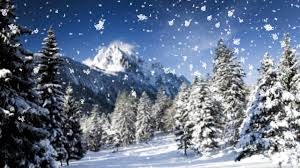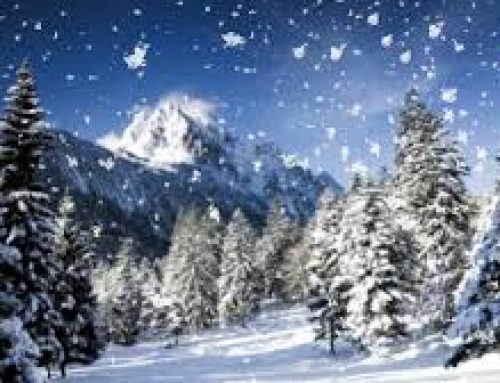
This is why it’s hotter in summer and colder in winter.
The reason it is sometimes winter and sometimes summer is that the Earth spins on a slightly tilted axis. You can see the red axis in the picture here (though really there is no axis to see; it’s a direction, not a real stick). In the winter, the North Pole is a little further from the Sun, and so the sunlight hits the North Pole at more of an angle, and it has more of the Earth’s atmosphere to go through before it gets to the Earth. That lets the area around the North Pole get colder. In the summer, the North Pole is pointed more toward the Sun, and so the part of the Earth near the North Pole gets more direct sunlight, and becomes warmer.
That’s the part with the pink guy on it – the United States and Canada and Europe. If you live in South Africa or Australia, nearer to the South Pole, then you get more direct sunlight when the pink guy is further from the Sun, and his summer is your winter, and his winter is your summer.

If it’s colder, rain may fall as snow.
This tilted axis is also the reason why there are more hours of daylight in the summer and fewer hours of daylight in the winter. In the winter, the closer you are to the North Pole, the shorter the days are. At the North Pole, it’s just dark all winter. In the summer, the closer you are to the North Pole, the longer the days are. At the North Pole, it is light all summer, with no nights at all.
Many plants and animals have evolved to take advantage of the changing seasons, so that they grow during the summer when there is more sunlight available and they hibernate or stay in the form of seeds during the winter when there is less sunlight.
Learn by Doing – Seasons
More about the Earth
More about Weather
Bibliography and further reading about the earth and the seasons:




